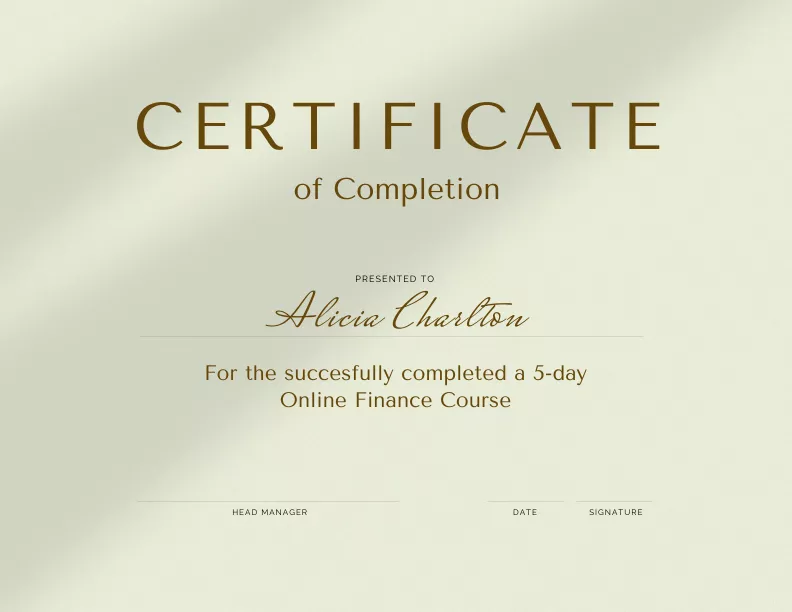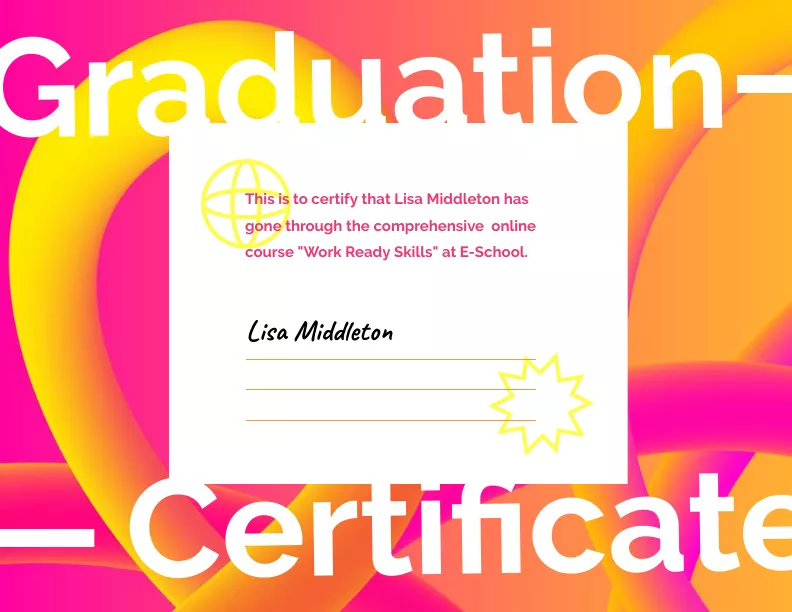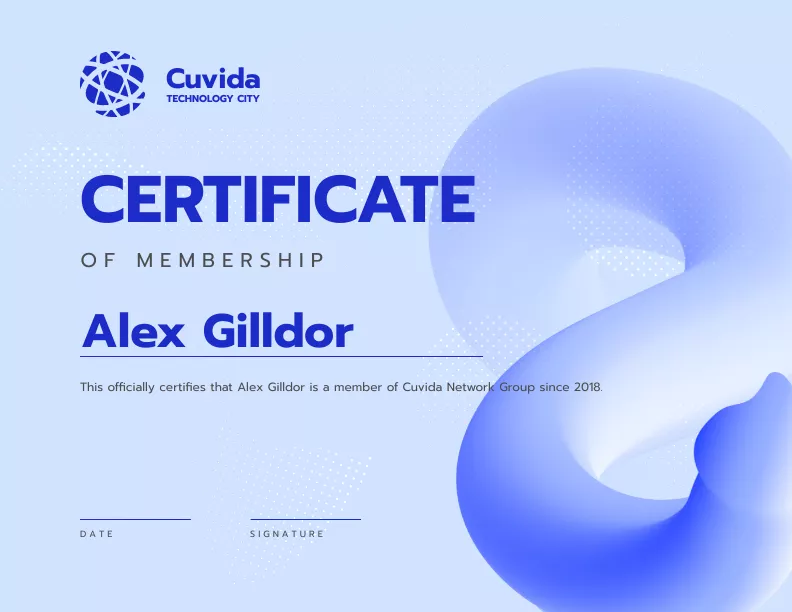Going multichannel: How to repurpose content and boost your business in 2022
According to a survey conducted by ReferralRock, 94% of surveyed marketers repurpose their content, and the remaining 6% are thinking about doing so in the future.
Source: ReferralRock
Whether you’re part of this statistic or not, content repurposing is one of the hottest content marketing strategies in 2022. So, if you want to stay relevant and grow your business, you need to wrap your head around what content repurposing is, its benefits, the trends and practices out there in 2022, and much more!
In addition, read about the top-7 smart ways to repurpose your best content to get more mileage out of it — in this very article! Make sure to read everything; there’s a secret lifehack on how to speed up content repurposing at the end.
What is content repurposing and why should you repurpose your content?
Content repurposing is the process of recycling the content you create as a whole or in parts to expand its reach. Essentially, you’re reworking your existing assets to make spin-off versions of them for various uses.
Usually, content repurposing goes hand in hand with repacking your existing content into different formats. That way, it allows you to reach larger audiences by targeting different platforms they utilize to consume content.
To better understand what content repurposing is, you need to first understand what it is not. So… What doesn’t count as content repurposing?
- Sharing an ancient blog post of yours on Twitter without altering the contents of it to make it more relevant is not content repurposing. (It might be seen as you being lazy.)
- Publishing a news article from a third-party website and editing it to fit your brand image is not content repurposing. (It might be classified as stealing.)
- Sharing the same content via different communication channels is not content repurposing. (It’s actually cross-channel marketing)
So, to really repurpose content, you need to upgrade it, add extra value, and even change its format to better fit the platform you plan to publish it on.
For example, you can repurpose content by turning a how-to blog post into a step-by-step video tutorial to post on YouTube; or taking a heavy-hitting key statistic from a whitepaper and designing an infographic to publish on Pinterest or Facebook; or giving an old interview a makeover and publishing it as a series of designed quotes on Instagram.
In fact, there are no limitations when it comes to defying the circle of content formats that can be reused:
- Interviews
- Presentations
- Podcasts
- Blog posts
- Whitepapers
- Research
- Webinars
- Speeches or Key Notes
- Video clips, vlogs, Reels
- Social media posts, and more!
Without a doubt, content repurposing is a laborious task that requires a lot of creativity, effort, and time. Nonetheless, many top-notch companies still resort to recycling their content when building their content marketing strategy. So, what are the benefits of content repurposing and why is it so important?
There are numerous advantages associated with content recycling. The most prominent ones include:
- Better content distribution. By presenting the same content in different formats, you increase its reach and visibility. Moreover, by adjusting content to meet the specific requirements of each platform, you increase the chances of it getting recognized by the algorithms as worthy of attention.
- Great level of content accessibility. It’s normal for the members of your target audience to have different preferences when it comes to content consumption. Some are keener on reading blog posts, while others are fond of video- and audio-content. By simply repackaging the content you create, you cater to all categories without the extra struggle of crafting unique content for each of them. Hence, you can reach a wider audience.
- Content diversification. Repetitiveness can quickly become boring. By publishing content in different formats, you can avoid tiring your audience. Instead, you keep your target audience at the edge of their seats, anticipating new publications.
- Improved SEO. Content repurposing can give your online pages more credibility as it increases the amount of links that trace back to your website/blog, as well as the amount of quality content published under your name on the Internet. On top of that, it also presents more backlink openings, as there are more pieces to share, quote, and reference.
- It helps redeem less successful content. Sometimes, no matter how much you try, the content you share with a target audience doesn’t get the reaction you hoped for. It’s a bitter feeling to see your creation — your literal baby — fail. But don’t get upset too quickly. Perhaps, it’s not the content itself that didn’t resonate with the audience. Maybe it’s the way you presented it. Content repurposing gives your material a second chance at achieving initial goals.
- Higher ROI for your content. By packaging your content in different ways, for different audiences, at different stages of the buyer’s journey, you increase the aforementioned content’s lifespan. As a result, you get more mileage out of it.
- Increased productivity. Content repurposing is time- and effort-efficient, as you’re not starting from scratch. You already have an idea and all the required resources — you just need to update the information and put it all together.
Content repurposing trends and best practices in 2022
Content repurposing is equally as creative as content creation itself. So, there are no limitations on how it can be carried out. There are a million different ways you can reuse one piece of content and turn it into a completely different one.
However, not all of these ways can help you leverage the benefits of content repurposing. To make your recycled content as impactful as possible, you need to keep up with the latest content repurposing trends and best practices.
We’ve compiled a list of the best tips and tricks for content repurposing in 2022 — enjoy!
Opt for evergreen content when choosing what to recycle
The majority of your efforts should be focused on repurposing evergreen content aka the content that isn’t time-sensitive and will be relevant to your audience for years.
There’s a good reason behind this.
As a rule of thumb, content repurposing takes some time. Unless you have a huge team working on developing marketing materials, repackaging content into different formats can take up to a week or more. If you’re working on a piece of news, you simply don’t have that time. By the time you’re done rewriting a PR statement into a long-form blog post, shooting and editing a YouTube video, and creating a series of emails, the once sensational piece will be old news that no one wants to consume. Therefore, you’ll waste a lot of resources and not see results.
This can be avoided if you focus on repurposing content that’s relevant at all times.
So, when searching through piles of content for pieces you can repurpose, pay attention to the all-time relevant ones:
❌ “Instagram’s latest update: Instagram has rolled out a new Stories Poll sticker” is a bad candidate for content repurposing
✅ “How to use the Instagram Stories Poll sticker to get more engagement and boost your business” is a good candidate for content repurposing
Reuse your most popular content
Look for the content your target audience already loves and offer it to them again, just in a slightly different format.
To find the ripest, most popular content you’ve produced, check out the following resources:
- Google Analytics. Check out your “landing pages” report; it’s going to show the pages that bring the most traffic to your site. A lot of people are loving the content posted on those pages, so it would make sense to share it with people on other platforms.
- YouTube Analytics. YouTube follows the same logic. Find videos that did well in the YouTube Studio and have gotten the most public recognition in the form of views, likes, comments, and shares. Then, turn them into different-format content.
- Post Impressions. Go post-by-post through your publications on social media to see which ones went viral. If they’re still relevant today, consider repurposing them.
Tap into the world of news
When repurposing content, you should always strive to make your new piece of content as timely and relevant as possible. The best way to do this is by tying it in with current events and news.
Look at what’s going on in the world and your industry. Then, think about how this information can be connected with the content you’ve already published.
For example, if you have a blog post on how to stay productive when working from home, you can easily turn it into a new blog post about maintaining your productivity at an all-time high during pandemic lockdowns.
If you can’t tie any world news with the content you publish on your channels, look out for industry news. Then, use those to your advantage to reuse content.
Turn every piece of repurposed content into a micro-learning opportunity
The main idea behind content repurposing is to bring more value with every post you reuse. So, you need to make sure that everything you publish on your platforms is filled with microlearning opportunities.
If you can’t update the content you repurpose with new, relevant information; up-to-date statistics; or other useful data, you can always garnish it with a conclusion you haven’t drawn before, a questionnaire, or a further reading section.
Spice your content up with visuals
As a matter of fact, humans process visuals 60,000 times faster than text. Therefore, it’s far simpler for people to remember visual information than the same information in written form. This is exactly why visuals of all kinds — images, illustrations, photos, GIFs, videos, and more – can give your content a second chance at going viral.
Even the oldest, most worn-out content can be revived when put into the form of a neat infographic, a deck of well-designed slides, or a pleasant-to-look-at short video. Make sure you use this knowledge to your advantage and create great visuals for your updated, recycled content.
VistaCreate Pro Tip: Don’t rob yourself of one of the most important benefits of content repurposing: time efficiency. Don’t go too hard on designing visuals. Instead, opt for a graphic editing software that can streamline the process and help you create professional-looking designs in minutes 😉
Keep the platform in mind when repurposing content
The content you get as a result of content repurposing must 1:1 match the format you’re aiming for. While reciting your blog post word-by-word in front of a camera will, technically, give you a video, it won’t be a well-performing one. Frankly speaking, it will be the most boring creation known to humankind (unless that’s the whole idea, of course, then you’re all clear) — hence, it’s predictable that you won’t get desired results.
On the other hand, using the blog post as a basis for your video, then adjusting it to be more script-like, shortening it a bit, adding transitions, and experimenting with fun visuals could totally work!
When you’re reusing content for a specific platform, you need to keep the audience that uses that platform in mind. Focus on what would be interesting to them and adjust the content you have accordingly.
Sean Nguyen from Internet Advisor
7 smart ways to repurpose content in 2022
We’ve come up with a list of six successful (sometimes, pretty unconventional) ways to repurpose content from one format to another — along with alternative solutions, too!
Gather user comments into a FAQ page or a blog post
One of the best advantages of having a social media page is that it establishes a way for your customers to converse with you directly, almost in real-time. They can leave comments under your posts to ask questions regarding your business, the products you offer, and the future of the industry. They can also send direct messages to find out the information they care about the most when it comes to your brand and the offers you make.
While responding to these inquiries directly is an important part of customer relationship management, you can also reply to such requests indirectly, in a publication on your social media account, website, or blog.
There are several advantages of repurposing your answers to user comments:
- You close the feedback loop
- You get to maintain ongoing communication with your target audience, potential leads, and customers
- You improve your SEO as you feature answers to the most burning questions of your target audience
- You improve your brand image and position yourself as an attentive to customer requests and inquiries brand
- You get ready-made content to reference in your future communications (for example, instead of writing out the same response over and over again, you can simply give the link to the in-depth answer that’s already published on your online page)
To repurpose your user comments into a FAQ page or blog post, gather all the comments you receive across different channels, group them based on the frequency of the topics, and create holistic responses to the most common questions.
Alternative ways to repurpose user comments:
- A how-to video
- A series of Q&A tweets
- A webinar
Turn a series of blog posts into an e-book
E-books are a way lengthier format than blog posts, newsletters, and any other written content businesses resort to when trying to market themselves. They require a lot of work, a lot of research, and a certain level of expertise in the field. So, traditionally, e-books are considered to be a fundamental piece of content that can’t be taken lightly and takes a plethora of effort to produce.
However, there’s a loophole you can use to your advantage. You don’t necessarily have to create a whole book from scratch. Instead, you can use your existing long-read blog posts on a specific topic and turn them into chapters of a short e-book.
Gather all the blog posts you’ve produced throughout the years of your blog’s existence, put them into the logically correct order, freshen them up with some exciting copywriting (no need to rewrite them, you can just paraphrase some bits and pieces), and include current stats to make your content more relevant.
To add more value to your e-book, don’t forget to design it and include plenty of pictures to illustrate the points you make. This will give your readers a better understanding of the things you’re trying to explain and give you, as an explainer, more credibility.
Once your e-book is ready, you can either publish it on your website, protect it with a paywall, make gated content out of it, or simply send it to your devoted email subscribers as a gift.
Alternative ways to repurpose a series of blog posts:
- Turn them into a podcast
- Create a series of videos
- Create checklists out of your articles
Turn an e-book into a learning course
As a rule of thumb, Amazon Kindle Direct Publishing or the landing page on a brand’s website are the final destinations for the majority of e-books produced by businesses. This, however, is a brutal mistake not to give the e-books a longer lifespan by repacking them into a different format.
One of the fairest formats that can do ebooks justice is a learning course. Not only are those equal in terms of the depth of presented information, but they also help businesses establish a more robust relationship with their target audience.
Learning courses help brands raise brand awareness, establish credibility, and showcase authority and thought leadership in the field.
Ideally, when you have a published e-book, you can deconstruct it and form a short lecture — either in written format or video format – from every chapter. Make sure to include a questionnaire at the end of each section to create a better learning opportunity for those who decide to dedicate themselves to your learning course.
Moreover, you can also design certificates to grant them to those who complete the course.




Once the content of the course is all ready, you can either publish the course on your website or on dedicated learning platforms such as LinkedIn Learning, Coursera, OpenLearning, etc.
Alternative ways to repurpose an e-book:
- Publish a physical book
- Host a webinar
- Create a series of blog posts
Turn a blog post into a series of Instagram Story quizzes
Whenever marketers think about spreading the word about their blog articles on social media, their minds immediately travel to creating posts on Facebook, Instagram, or LinkedIn, teasing the content of the blog post and inviting to read more by following the link.
Of course, some brands take more creative routes and repurpose blog posts by repacking them into Instagram carousels. Here’s an example of how VistaCreate does it: for the majority of our best-performing blog posts, our in-house team of marketing designers creates a deck of cards for social media based on the information laid out in the articles.
For example, look at how we’ve turned this post about the ins and outs of digital marketing into an Instagram post:
But you don’t have to stop there. If you want to be remembered as a more unconventional brand with cutting-edge posts, you should leverage all the benefits of social media. Today, Instagram opens a whole new world of opportunities for businesses to draw attention to their content — in the form of the good old quizzes.
Competitiveness is a part of human nature, so it’s not unusual for people to pay more attention to the content that challenges them and puts them against other viewers. Instagram Story Polls do just that.
Gather all the factual information from your blog posts and make your audience guess which facts are true, and which ones are made up. It’ll be fun!
Alternative ways to repurpose a blog post:
- Turn it into a series of tweets
- Create a checklist
- Turn it into an infographic
- Create a TikTok or a Reel out of it
- Create an Instagram Guide
Turn live streams into YouTube videos
Since the beginning of the pandemic back in 2020, video format, live streaming in particular, has been getting more and more popular.
Live streaming is quite versatile as it comes in a variety of different forms: you can livestream webinars, gaming, video podcasts, demonstrations, keynote presentations, etc. It all boils down to what your audience is interested in seeing in real-time.
However, you should limit yourself to only benefiting from live events once. If you step away from branding them as “one time only” and “live only” events, you can get way more marketing opportunities out of your content.
While claiming that a certain event is a “one and done” deal can give your audience FOMO and urge them to register, granting them access to materials of the live event after it’s over is a better solution in the long run.
So, you should consider recording your live events and publishing them as YouTube videos. You can either post them as they are, without any editing, or you can edit the videos to make them more suitable for YouTube.
P.S. Don’t forget to design a banging thumbnail for your video; you want the stage to be all yours.



Alternative ways to repurpose live streams:
- Post the best quotes on Twitter
- Create a blog post with highlights from the live stream
- Publish TikToks and Reels
- Create a series of social media posts
- Create a slideshow
Transcribe podcasts and turn them into an email newsletter
Podcasts are a hot content marketing trend these days. But without proper content repurposing, they can be rather short-lived. To increase the lifespan of your podcast, you need to work on alternative formats in which your talks can be transformed.
The most obvious one would be to transcribe your podcast and make a blog post out of it. But we aren’t here for the most obvious solutions, are we? A more unexpected move would be to use the transcription to put together an email newsletter or even a series thereof.
For every episode of your podcast, you can create a digest newsletter with the most controversial and important points made. Don’t forget to abide by all the rules of successful email design in 2022!
Alternative ways to repurpose podcasts:
- Post the best quotes on Twitter
- Post parts of the podcast on your Telegram channel
- Create an Instagram post
Turn a slideshow into an infographic
Every business is guilty of abusing PowerPoint. It’s a tradition for businesses to create slides for every speech they give, every event they attend as a speaker, and for every report they submit to both the public and their direct management.
After a while, a business accumulates a substantial amount of slides — those cannot and should not go to waste! Give your audience a taste of those slides but in a bite-size, easily digestible format: an infographic.
They are sexy, easy-to-read, and have the potential to go viral (infographics open up the portal to the world of Pinterest!). Why not give it a try?
Just remember that even though infographics — despite the name — don’t necessarily have to be overly informative (you can take a single piece of data and doll it up a bit), there still should be a central bit of information that you base your infographic on. Ideally, you should include some useful graphs and charts to captivate your audience.


Alternative ways to repurpose slideshows:
- Turn them into videos
- Create a series of social media posts
- Publish them on your Story
How VistaCreate can help you repurpose content better
As we’ve already established, the majority of ways in which you can repurpose content are visual. It doesn’t matter if you decide to create decks of cards for your social media profiles; craft Stories; shoot long- or short-form videos for either YouTube or TikTok; release infographics; or anything else… You’ll still need to get on top of your design game to give your content the power to make more impact, stick around for longer, and even go viral.
The free version of VistaCreate gives you access to a huge library of templates that you can use to craft your own marketing designs.
However, once you get a taste of content repurposing, you might want to try out VistaCreate Pro and its Resize feature.
This feature allows you to avoid the struggle of starting new designs from scratch when trying to adjust your visuals to different platforms. With Resize, you can transform your beautiful project from an Instagram post into a YouTube cover in a matter of several clicks.
All you need to do is click on the Resize button at the top right once you’re done creating a design. Then, in the window that appears upon clicking on the button, you can set dimensions for your new project. There are two ways to do so: either by setting custom dimensions, or by choosing one of the 70+ formats offered by VistaCreate.
If you need to create more than one variation of your design, you can just tick off as many as you need and create them all at once.
Et voila! Every new project will be opened in a new tab, ready to be saved or further edited!




















